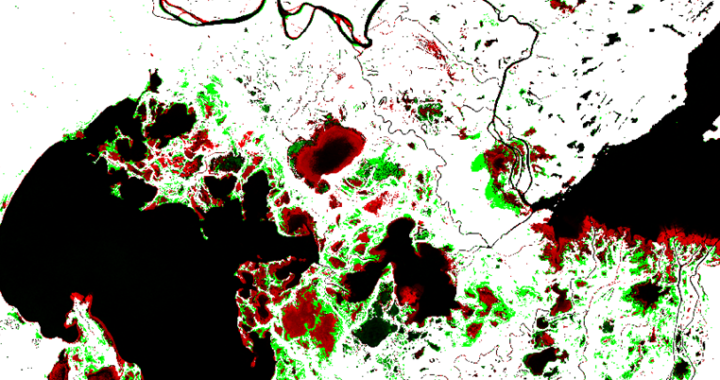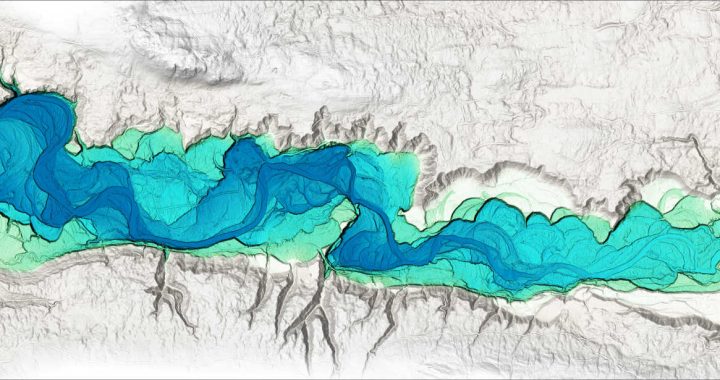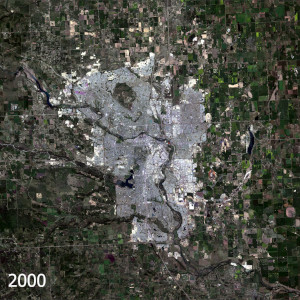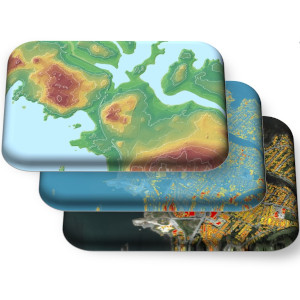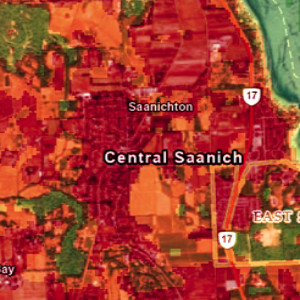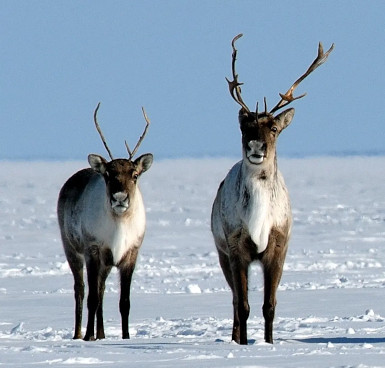Our remote sensing team at Caslys highlights surface water detection methods in a case study of Northern Alberta and the Peace-Athabasca region. This delta and its dynamic hydrologic environment is a strong example of an area that experiences a high degree of change in surface water levels annually. Check out the article below to see our results and learn more about surface water detection! What is surface water? Surface water refers to any body of water found on the Earth’s surface, encompassing both saltwater and freshwater sources. Freshwater surface bodies such as rivers, streams, and lakes are essential for maintaining ecosystems by providing habitats for diverse plant and animal species. Additionally, they support numerous human activities, including drinking water supply, irrigation, wastewater treatment, livestock management, industrial processes, hydro power generation, and recreational activities. The presence of surface water varies in response to a variety of driving forces including, but not limited to: human activity, environmental change, and climate. Forest fires, floods, rising temperatures, urban and industrial development, as well as other climate factors and human activities all can impact surface water presence. Due to its volatile nature, available hydrologic spatial datasets often overlook seasonal surface water changes. The gap in up-to-date hydrologic data can be filled with raster-based time series approaches that allow us to view hydrology in a more dynamic way. The resulting surface water layers are important for effective planning and decision making in multi-use landscapes. Case Study: The Peace-Athabasca Delta Northern Alberta is home to one of the world’s largest inland freshwater deltas. The area serves as a refuge for more than one million migratory birds each year, as habitat for 270 animal species; including the globe’s largest free-roaming herd of wood bison, as an enclave for native grasses and sedge’s and as the lifeblood for the […]
Continue readingTag Archives: GIS
Floodplain Visualization with Relative Earth Models
In this article, we explore how Relative Earth Models (REMs) can be used to visualize floodplains. Fluvial environments have significant natural and anthropogenic roles. Rivers are key features that shape our natural environment and create important ecological habitats. Additionally, they have numerous uses, including those relating to transportation, hydroelectricity, and recreational activities. While many reasons may attract us to them, these dynamic environments can also repel us with flood events and the dramatic hydrodynamic forces that shape rivers – the recent landslide event in the Chilcotin River (located in the Cariboo Regional District, British Columbia) being an example of such forces at play. This duality makes fluvial environments an important subject of study. The Role of Topography in River Systems Topographic data is often represented by a Digital Elevation Model (DEM), where an elevation value is assigned to each pixel in an image. These values can represent the ground or bare earth as in the case of a Digital Terrain Model (DTM). Due to river systems flowing downhill, a decreasing trend will be present in the elevation values of the DTM. Within these trending elevation values, there are smaller topographic features that make up the river corridor. These features play a significant role in the river’s hydraulics and will influence the way in which sediment is eroded or deposited. Floodplain Visualization with Relative Earth Models A technique used to better understand these topographic variations is a Relative Earth Model (REM) or Height Above River (HAR) raster. An REM is created by removing the downward slope of the river, and leaving only the local topographic features so that the resulting elevation values are relative to the height of the river. REMs are primarily used as a tool to visualize river corridors, and can be used to identify historic river features as […]
Continue readingCalgary is Growing – Caslys Monitors Landscape Change
Calgary, Alberta is once again one of the fastest growing cities in Canada. With a constantly evolving city skyline, and growing community boundaries, our team at Caslys thought it would be interesting to apply our landscape change tools to see what’s been happening. We utilized Landsat satellite imagery and our new Caslys Analysis Ready Data (CARD) Stack processes, to explore the change in landscape across Calgary over the past 20+ years. The results are included in the article below, highlighting the overall expansion that the city is experiencing. With a strong job market and diverse amenities, Calgary is an attractive place to be and is recently one of the fastest growing metropolitan areas in Canada. Between 2022 and 2023, Calgary experienced the largest population increase in the country, surpassing 1.6 million people. We applied a few analysis methods to see what the growth distribution looks like on the landscape. There have been some significant growth spurts over the last couple decades. While suburban growth into the agricultural outskirts remains a common theme as you can see in the animation below, there are also new communal green spaces within the city. Development Milestones In 2013, Calgary moved forward with highway construction in two areas, developing the “Ring Road”. It’s part of a larger east-west/north-south trade corridor, and enhances the city’s accessibility. Improved transportation infrastructure helps connect the four quadrants of the city and links the new communities that are developing on the outskirts of Calgary. A projected 17 new neighbourhoods surrounding the city within the 2024 Area Structure Plans and Citywide Growth Strategy were announced. Within the downtown area of Calgary, further transportation development continues to push forward with additional light rail transit lines (LRT) being added to help commuters throughout the city. Olympic Plaza and the Eau Claire Market area […]
Continue readingCaslys Releases New Geospatial Service
After years of technical development and internal pilot testing, Caslys Consulting is proud to officially announce our new geospatial service to the remote sensing and GIS world, the Caslys Analysis Ready Data (CARD) Stack! Assembling terrain data, spatial data, or satellite imagery at the beginning of a project is often a complicated and cost inefficient process. There is a large amount of geoprocessing needed to obtain high-quality data, satellite imagery, and build a suite of useful derivative map layers that meet project requirements. This can be a very time-consuming task, using up more project budget than necessary. What is CARD Stack? CARD Stack is a technical resource focused on allowing our customers the ability to easily generate comprehensive spatial datasets. These datasets kick-start both spatial and spectral analyses while also enhancing the visualization of a project site through a simple request submission. Caslys Consulting has created multiple scripts, tools, and geospatial resources with the goal of making this task easier for our customers. CARD Stack services efficiently streamline data package assembly and delivery for a client in a timely manner. Based on the request, a wide range of raster and vector products are consolidated by our team into a single, user-friendly data package. These packages can include: Learn more about CARD Stack today! The Caslys CARD Stack team is excited to help our customers accomplish their geospatial tasks in a fast and efficient manner. For pricing inquiries, product details, and more info on how CARD Stack can help fulfill your project needs, click here or follow the link below. CARD Stack website: https://www.caslys.ca/cardstack/ About Caslys For over 20 years, Caslys Consulting Ltd. has taken pride in offering a wide range of high-quality geospatial services for both environmental and natural resource management industries. Our focus is on interpreting and analyzing data […]
Continue readingAnalyzing Summer Heat Domes using Land Surface Temperature
With summer approaching and anticipation for rising temperatures growing, our team at Caslys reflected on some of the past heat waves in recent memory and dove into some current extreme temperatures being experienced elsewhere in the world. Analysis Completed using CARD Stack Services June of 2021 stood out to many of us in the Victoria region, with record breaking high temperatures causing city wide stress and even pushing businesses to close due to both health and technical issues. Leveraging our CARD Stack services, the Caslys team accessed analysis-ready datasets to further investigate the 2021 heat dome experienced across southern Vancouver Island. Our approach focused on Land Surface Temperatures (LST) as a key parameter. LST differs from classic weather report temperatures, also know as atmospheric (air) temperatures. It is a measurement of ground or surface temperature to the touch, and is an effective weather index that shows variability for studies at regional and global scales. While weather stations and local sensors can provide temperature data, remotely sensed imagery data has proven to be a great source of accurate temperature distributions at high spatial and/or temporal resolutions¹. After acquiring 10 years of Landsat 8 imagery over multiple June dates for the CRD, the LST was calculated and used in this case study to create strong visual indicators of surface temperature extremes. The June 21st, 2021 image showcases the abnormally high surface temperatures experienced across the Saanich Peninsula, reaching upwards of 40oC. This is more than double the expected June temperature high, which between 2000 and 2024, is about 17oC according to historical data. Areas with forest and tall vegetation were much cooler relative to developed areas with concrete or pavement, causing extreme urban heat island effects. Heat Waves Around the World Parts of Mexico and India recently experienced similar abnormal heat waves […]
Continue readingCaribou Research Awarded Canadian Journal of Zoology Editor’s Choice
A recent article by Caslys team members published in the Canadian Journal of Zoology has been highlighted as the Editor’s Choice! These publications are a part of Canada’s largest independent leader in mobilizing science-based knowledge. Canadian scientists are faced with many hurdles to overcome in wildlife management, one of which is maintaining the connectivity of species population through the conservation of their migration corridors. This article explores the effects of roads on barren-ground caribou in Northern Canadian regions using spatial and temporal models. To read the full article and to learn more about the impacts of road networks on caribou migration, please visit: https://cdnsciencepub.com/doi/full/10.1139/cjz-2023-0121 About Caslys For over 20 years, Caslys Consulting Ltd. has taken pride in offering a wide range of high-quality geospatial services for both environmental and natural resource management industries. Our focus is on interpreting and analyzing data to deliver cost-effective solutions and help our clients make better informed decisions. We specialize in Geographic Information Systems (GIS), remote sensing, information management and application development to meet the needs of both public and private sector clients within Canada and abroad. As a company, Caslys Consulting combines strong technical skills in our specialized fields with the ability to effectively communicate technical results and complex products to help show our clients how it can be used for meaningful decision making. We also understand the importance of sustainability and take pride in promoting sustainable initiatives and practices to help improve the communities we are working in. Caslys Consulting Ltd. acknowledges and respect the Lək̓ʷəŋən peoples and W̱SÁNEĆ Nations on whose traditional territory the Caslys office is located. We thank them for their strength and resilience in protecting this land and aspire to uphold our responsibilities according to their example. Barren-ground Caribou image source: John Nagy/GNWT https://www.nwtspeciesatrisk.ca/en/our-species-risk/barren-ground-caribou
Continue reading